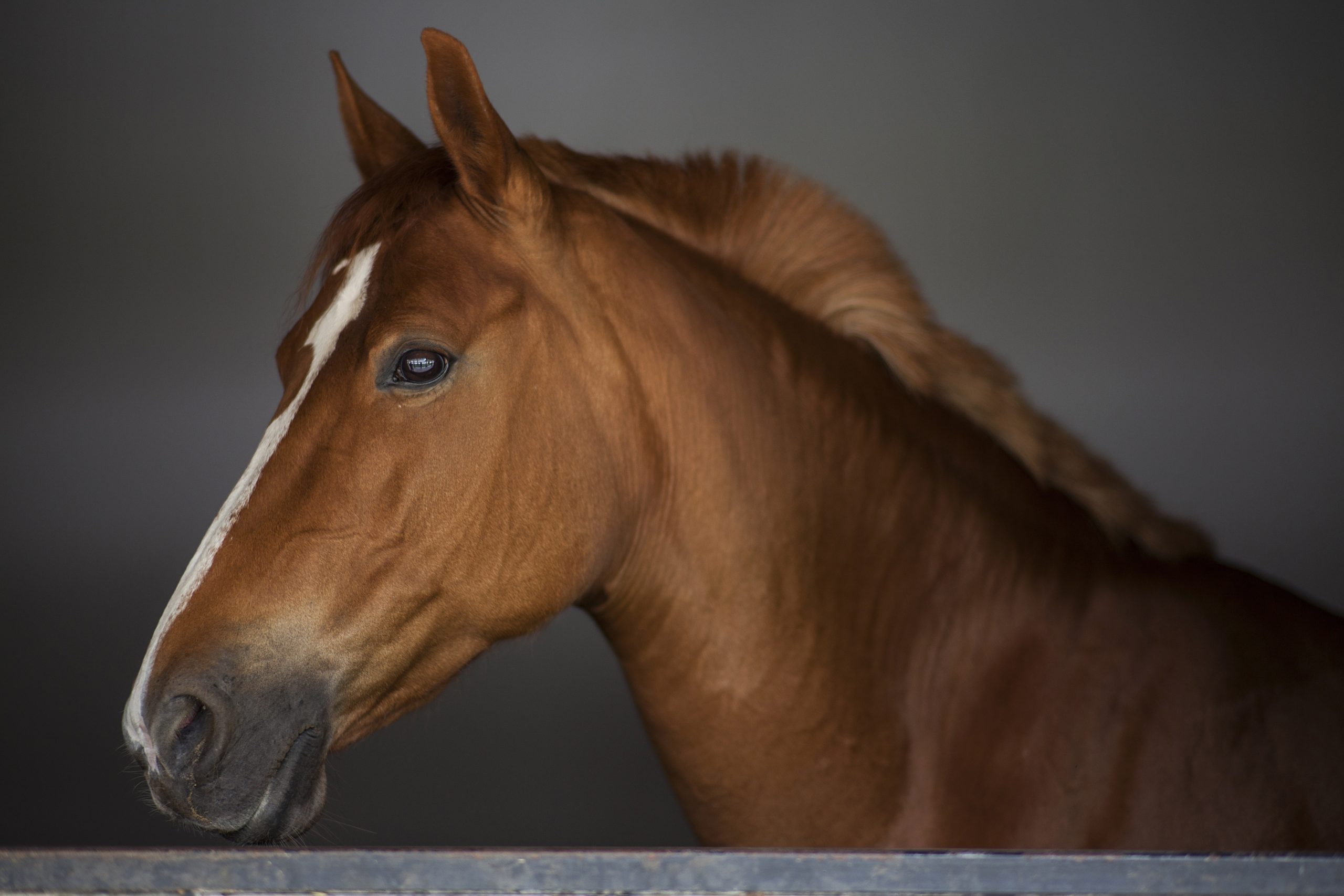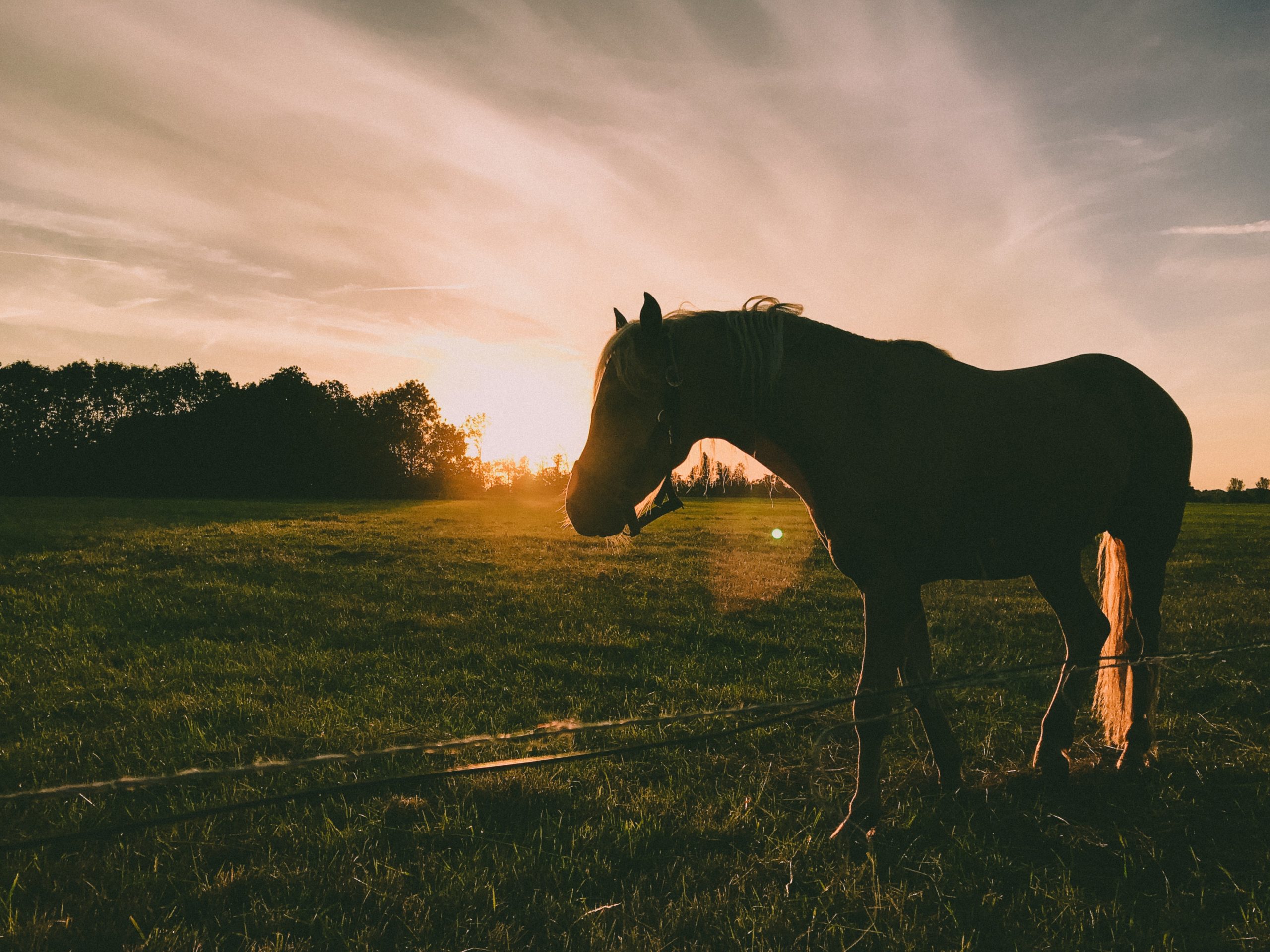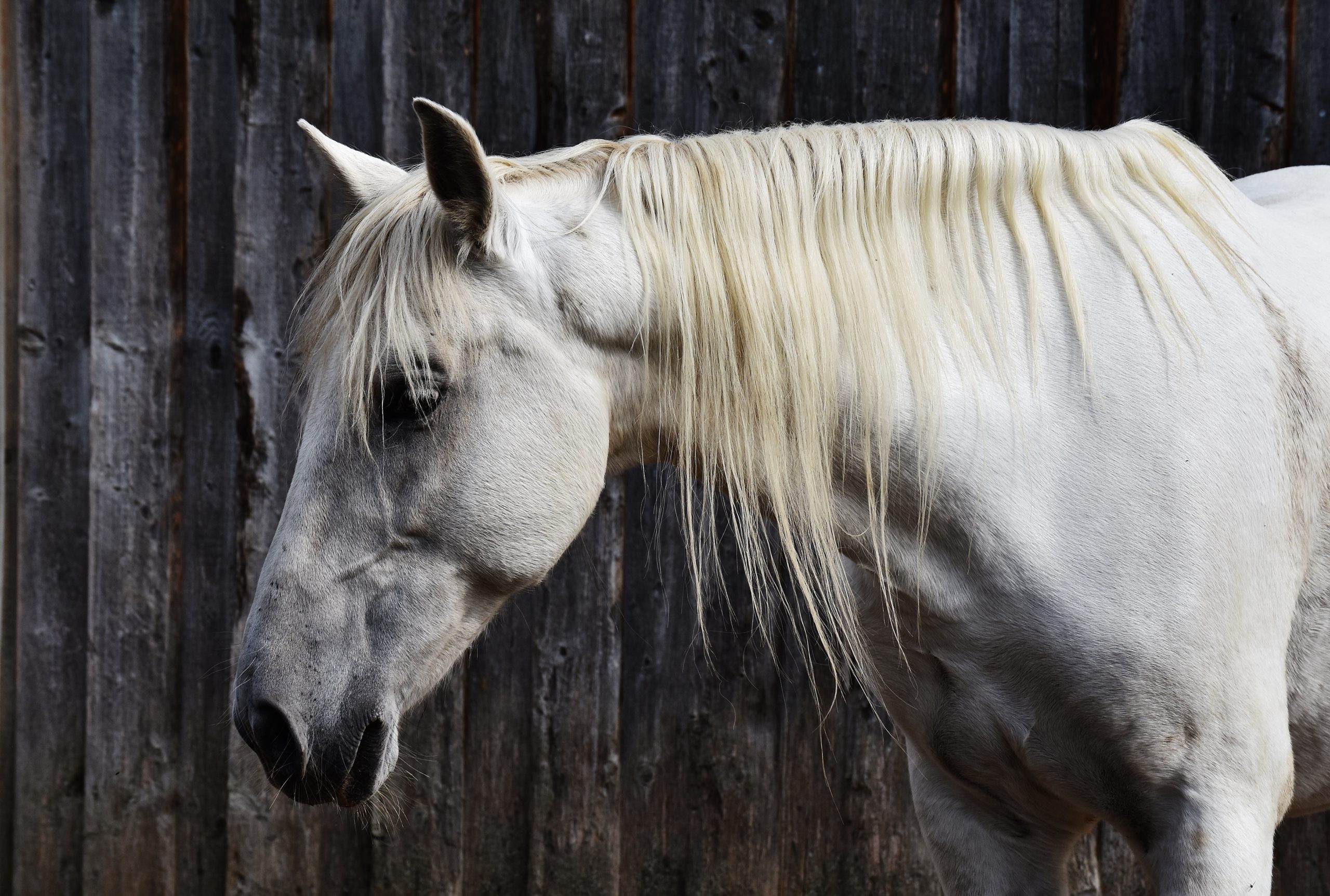Your new gelding stands in the stall and coughs. He has a clear nasal discharge but no fever. When you clean the stable in the morning, he seems to have trouble breathing. When he’s eating hay, he coughs more. You can’t exercise him very much because of his labored breathing. He also seems to be losing weight.
You decide to give him a few days’ rest and turn him out into the pasture. In a few days he’s running around the field with no hint of a cough.
Your friend’s mare stands in the field and coughs. She is turned out all year, but in the summer she has considerable trouble breathing as she grazes. When she goes on a trail ride, she can’t tolerate much exercise without showing signs of distress. Your friend keeps her in a stall for the weekend and calls the veterinarian to schedule a checkup on Monday. By the time the vet examines the mare, she’s much better.
Both these imaginary horses exhibit classic (though simplified) signs of heaves, a condition somewhat similar to asthma in humans. The scientific name for the problem is chronic obstructive pulmonary disease (COPD). It can also be known as recurrent airway disease or recurrent airway obstruction. The descriptions of the gelding and mare seem to discuss very different conditions because the disease can result from reactions to varying environmental stimuli.
What causes ‘heaves’?
A horse with heaves is sensitive to mould, dust, pollen, or some other allergenic substance. The sensitivity leads to constriction, irritation, and mucous production in the small airways of the lungs.
Seriously affected horses use the abdominal muscles to help the lungs expel air, developing a visible “heave line” on the sides of the barrel in the flank area from the constant exertion. A wheezing noise can sometimes be detected with a stethoscope as the horse breathes.
If the offending substance is mould spores commonly found in hay and bedding, the horse will have problems when kept in the barn but will usually improve dramatically if he is kept at pasture.
Other horses are less sensitive to substances found in dried forage or straw but develop signs of allergy when they are managed on pasture during warm or hot weather. This type of airway disease is known as summer pasture-associated obstructive pulmonary disease (SPAOPD). Although pollens and molds are suspected culprits, researchers have found evidence that other factors such as insect saliva may also play a role in SPAOPD.
What is the treatment for ‘heaves’?
Regardless of the cause, the most effective treatment is to minimise the horse’s contact with irritating substances.
Horses that have problems in the stall often become symptom-free if full turnout is possible. Veterinarians emphasise that some animals can quickly develop serious bronchial obstruction from even brief contact with allergens, so extremely sensitive horses should never be brought into the barn. A few minutes of stall time for a quick grooming or tacking up could easily override the benefit of hours in the pasture.
If ‘heavey’ horses must be kept in the barn, some measures can be taken to limit their exposure to mould spores and dust:
- If possible, hay should be stored in a separate building from the one used to house sensitive animals.
- Wetting or soaking hay before it is fed has been shown to help some horses.
- Eliminating straw and choosing bedding materials such as wood shavings, shredded paper, or peat moss may provide some relief.
- A horse that shows only moderate sensitivity may do well if he is led out when the stall is cleaned or when fresh bedding is added, going back into the barn after dust and mould spores have settled.
- Providing proper ventilation will improve air quality, but strong drafts through the stalls should be avoided.
Because they are sensitive to conditions associated with warm-season pasture, summer-affected horses have fewer problems when they are kept in the barn during hot weather. Moving the animal to a different climate is successful in some cases, but other horses are able to breathe normally only when they are kept in air-conditioned stalls. Exercising in a dirt or sand ring is preferable to riding on trails or grassy areas while the horse is showing signs of airway obstruction.
Because horses with chronic, untreated heaves can end up with irreversible lung damage, early diagnosis and treatment are important to the comfort and usefulness of an affected horse. In addition to management changes, treatment for COPD may include bronchodilators, anti-inflammatory medications, and mucolytic agents to loosen secretions that block airways. Several forms of inhalation therapy have been used with variable success. It is not unusual for a horse to have bacterial infection as a complication of COPD, and a veterinarian can provide medication to combat this condition.
Treatment options should be discussed with the veterinarian as part of a comprehensive management plan for affected horses.
Are any dietary changes required?
Horses with heaves have the same nutritional requirements as other equines, and simple changes in a feeding program can help some individuals. Some horses have had fewer problems when loose hay has been replaced with silage, haylage, hay cubes, or fermentable fibre such as beet pulp or soy hulls. Animals that are sensitive to the fine particles in oats or other straight grains may get along better when molasses is added to the ration or when sweet feed is used.




